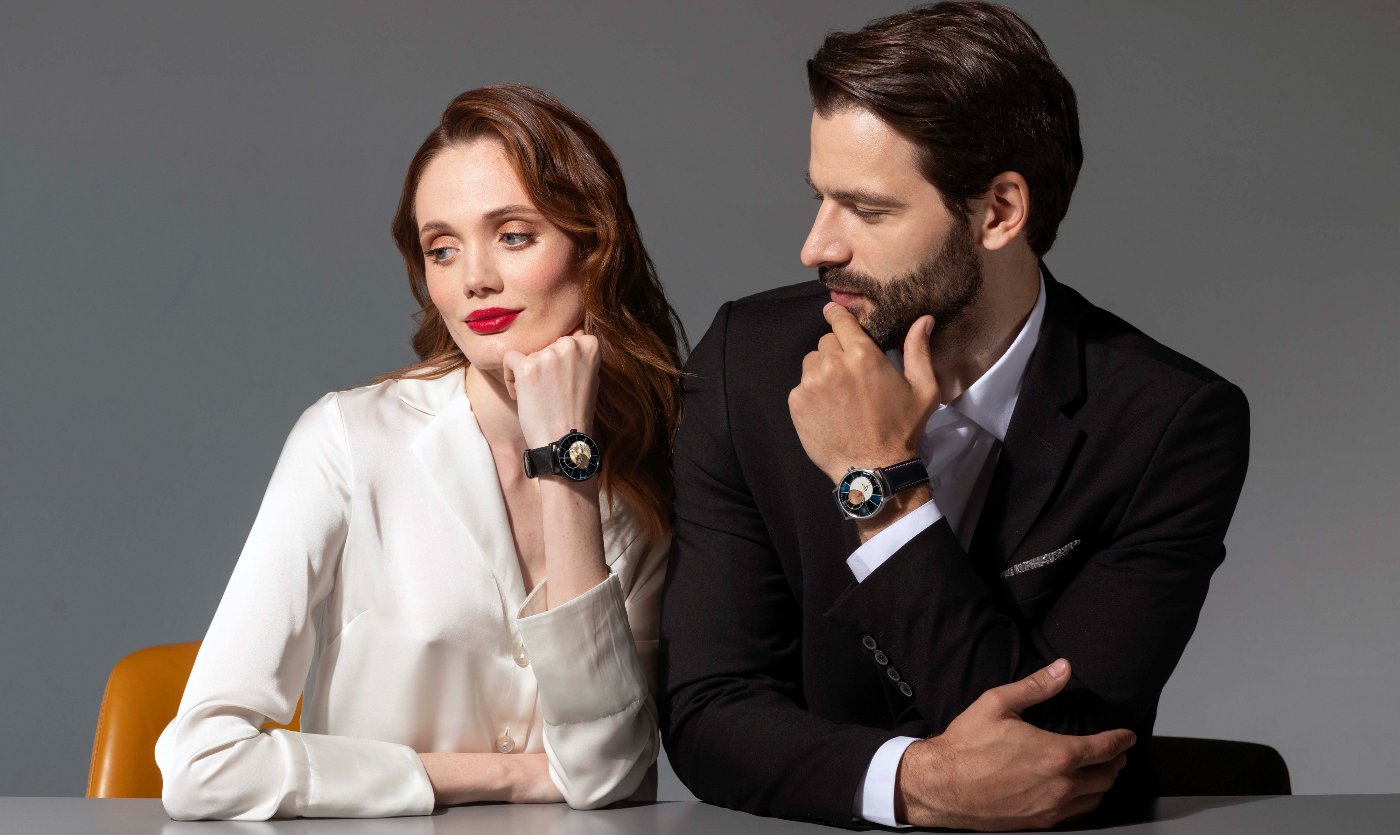aketa’s latest automatic watch, elegant but also quirky, is inspired by the iconic Soviet “Copernicus” watch. The Raketa Copernicus displays the time with a spectacular view of three planets (the three hands on the dial) turning around the sun against a backdrop of stars sparkling in space.
This watch takes you back to the origins of time-reading when our ancestors determined the time by looking at the sky. To read the time on this watch, you will observe the movement and the position of the planets relative to the sun, while at the same time enjoying the incredibly beautiful choreography of the planets interwinding their paths around the sun.
Ever since the brand “Raketa” was created in 1961 to celebrate the first manned space flight by the Russian cosmonaut Gagarin, the kosmos has always been a source of inspiration for Raketa’s watchmakers. It’s therefore no wonder that one of the most iconic Soviet Raketa watches was the “Copernicus” model: its design was entirely inspired by Copernicus’ revolutionary discovery in the 16th century that the sun lies at the centre of the solar system, and all the planets revolve around it - and not the other way round as had been thought up to then.
When Soviet Raketa designers created the Copernicus model, they had the following idea in mind: the big circle (minute hand) symbolises the Earth, and the intermediary circle (hour hand) symbolises Jupiter. Why? Because the Earth orbits the sun in 1 year and Jupiter in 12 years: exactly the same ratio as between the minute hand (big circle) that “orbits” the dial in 1 hour and the hour hand (intermediary circle) that “orbits” the dial in 12 hours. This “in-house” story was never made public during Soviet times.
This news edition, limited to 300 pieces, is based on Raketa’s existing “Copernicus” model, with the following differences:
- Its dial is made from 2 different stones: the beautiful dark blue aventurine that looks so much like the dark sky sparkling with stars, and the round yellow agate which conveys so well the feeling of incandescence on the sun’s surface.
- The second hand is also represented by a circle (the smaller disk) (in the standard collection the second hand is a straight hand).
- The black PVD case.
- The open case back.
- The decoration of the automatic movement (entirely produced at the Raketa Watch Factory): stars and planets are engraved on the automatic bridge, the rotor has beautiful hand-made Neva waves and the movement is gold plated to remind the colour of the sun.
TECHNICAL SPECIFICATIONS
Movement:
- Calibre: 2615
- Functions: Automatic
- Number of jewels: 24
- Testing positions: 4
- Average rate (s/d): -10+20
- Average running time (h): 40
- Frequency/hour: 18.000 / 2.5Hz
- Bi-directional automatic winding: Yes
- Stopper of self-winding unit activated during manual winding: Yes
- Decoration: Gold Plating, engraving, printing, hand-made Neva waves
Case:
- Material: Stainless steel / PVD black
- Diameter: 40,5 mm
- Length (lug to lug): 45 mm
- Front glass: Sapphire
- Back glass: Mineral
- Rotating bezel: No
- Water resistance: 5 АТМ
- Dial: Semi precious stones: aventurine and yellow agate
Strap/bracelet:
- Material: Genuine leather
- Width: 22 mm
- Unisex
Price: 1.290 EUR (without VAT)











